In the figure two blocks are given velocities as shown. The lower block is very long. Find velocities of both the blocks when relative motion between them is ceased
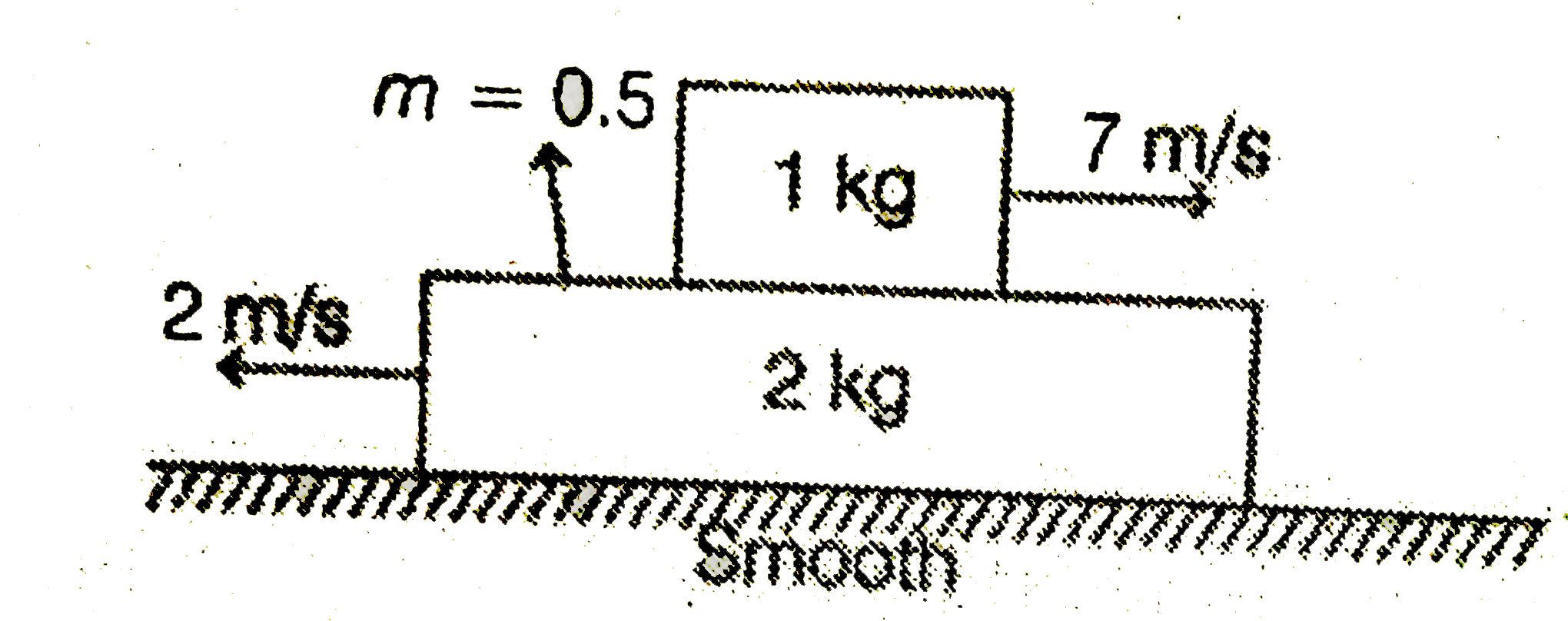
(towards right)
(towards left)
(towards left)
(towards right)
The correct Answer is:D
Step by step video solution for In the figure two blocks are given velocities as shown. The lower block is very long. Find velocities of both the blocks when relative motion between them is ceased by Physics experts to help you in doubts & scoring excellent marks in Class 11 exams.
Similar Questions
In the figure shown, upper block is given a velocity of 6m/s and lower block. 3m/s. When relative motion between them is stopped
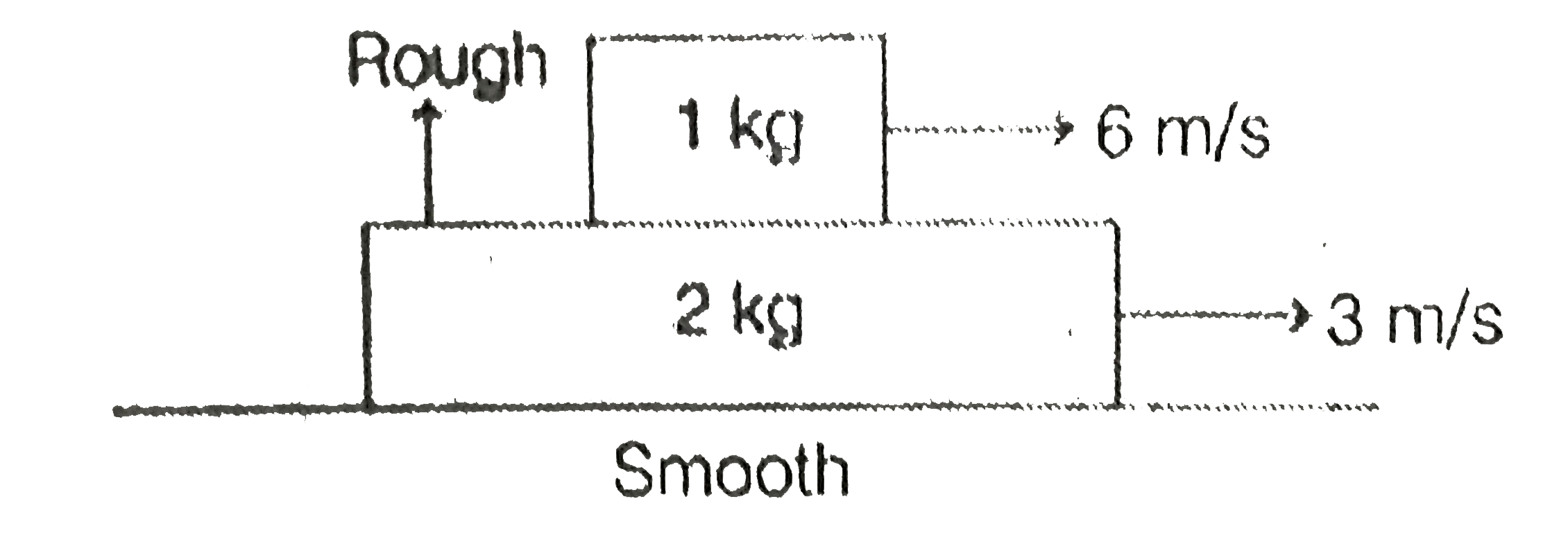 View Solution
View SolutionIn the figure shown, upper block is given a velocity of 6m/s and lower block. 3m/s. When relative motion between them is stopped
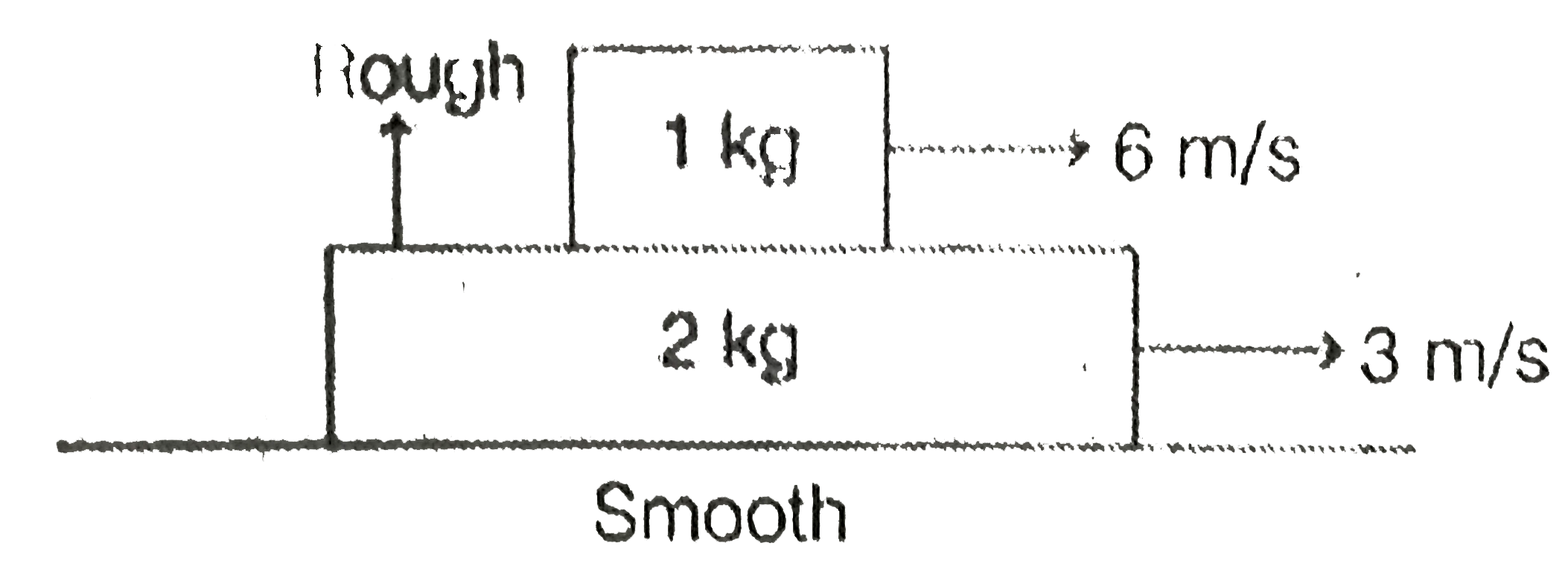 View Solution
View Solutioncoefficient of friction between two blocks shown in figure is μ=0.6. The blocks are given velocities in the direction shown in figure. Find
(a) the time when relative motion between them is stopped.
(b) the common velocity of the two blocks.
(c) the displacement of 1kg and 2kg blocks upto that instant. (Takeg=10m/s2)
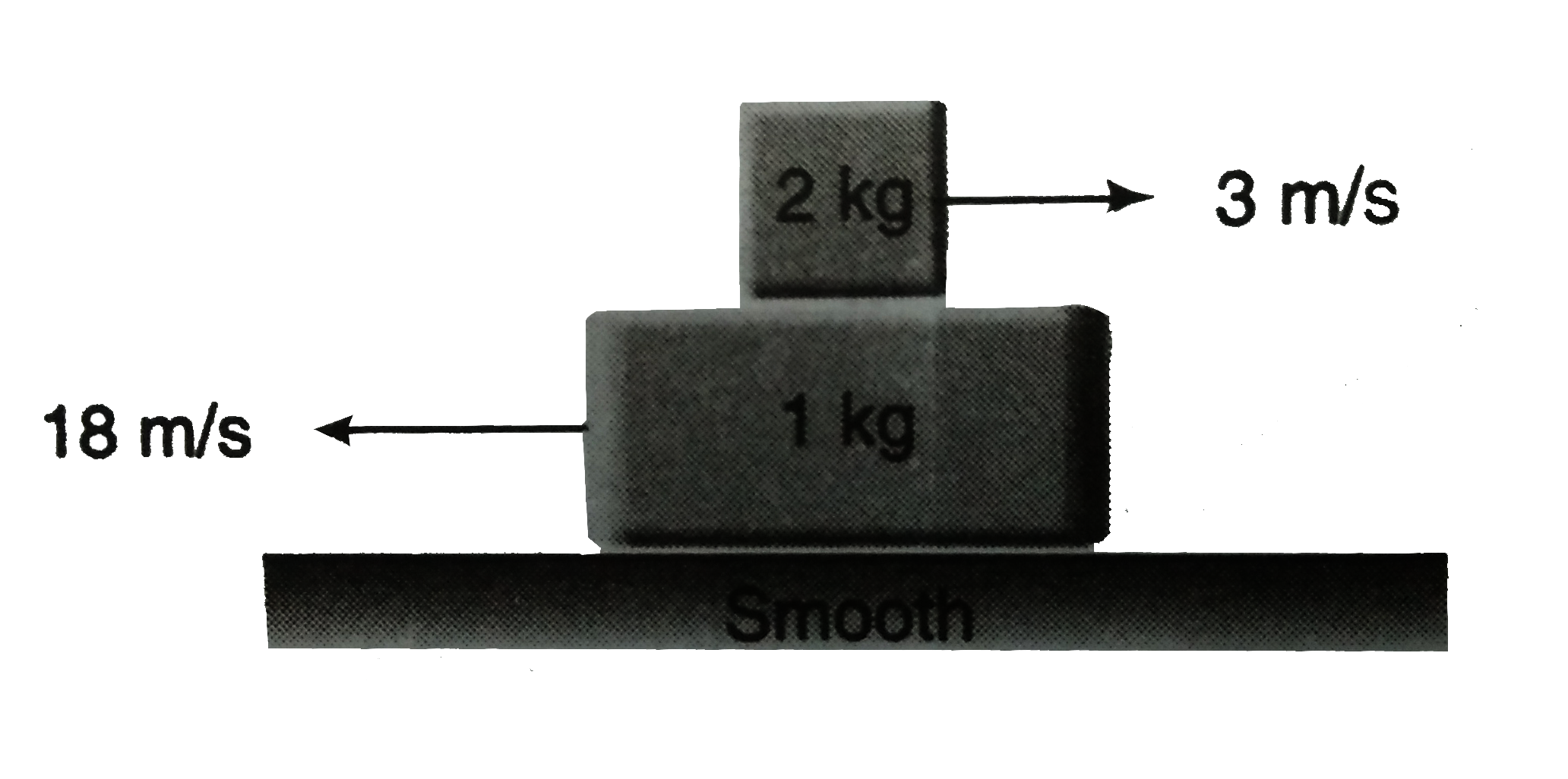 View Solution
View SolutionCoefficient of friction between two block shown in figure ia μ=0.4. The blocks are given velocities of 2m/s and 8m/s in the directions figure. Find
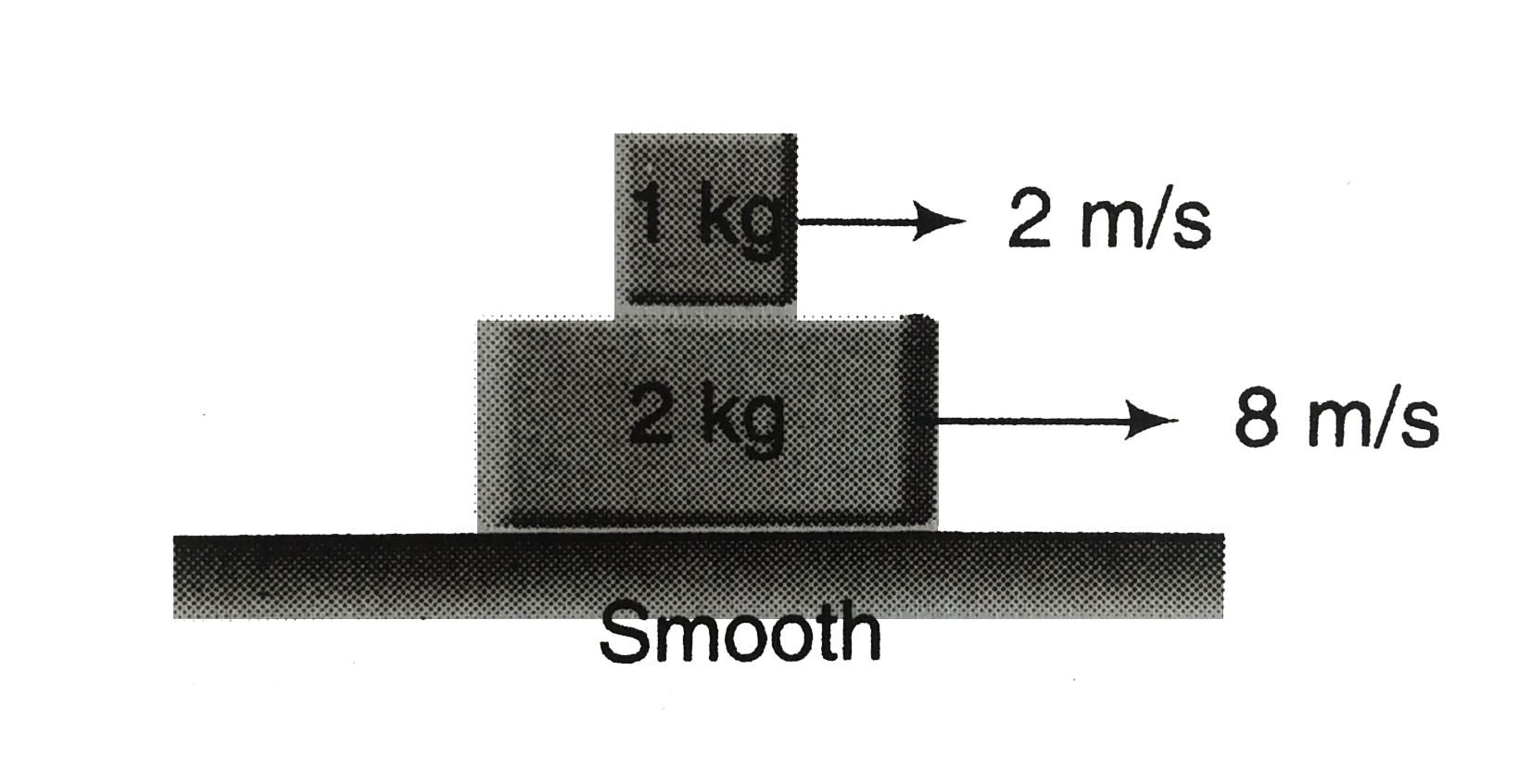
(a) The time when relative motion between them will stop
(b) the common velocities of blocks upto that instant. (c) Displacement of 1kgand 2kg block upto that instant (g=10m/s2).View SolutionIn the given arrangement the maximum value of F for which there is no relative motion between the blocks
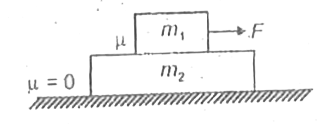 View Solution
View SolutionBlock A of mass 5kg is placed on long block B having a mass of 5kg. The coefficient of friction between two block is 0.4. There is no friction between the ground and lower block. The upper block is given a sudden velocity of 10m/s. The upper block slides toward right, so friction force acting on it will be toward left. Its reaction wall act on the lower block, which will act forward . The friction force absorbs x mechanical energy from upper block but supply only y mechanical energy to lower block. Due to friction the velocity of upper block reduces and velocity of lower block increases. This will continue till velocity of both the block get equal.
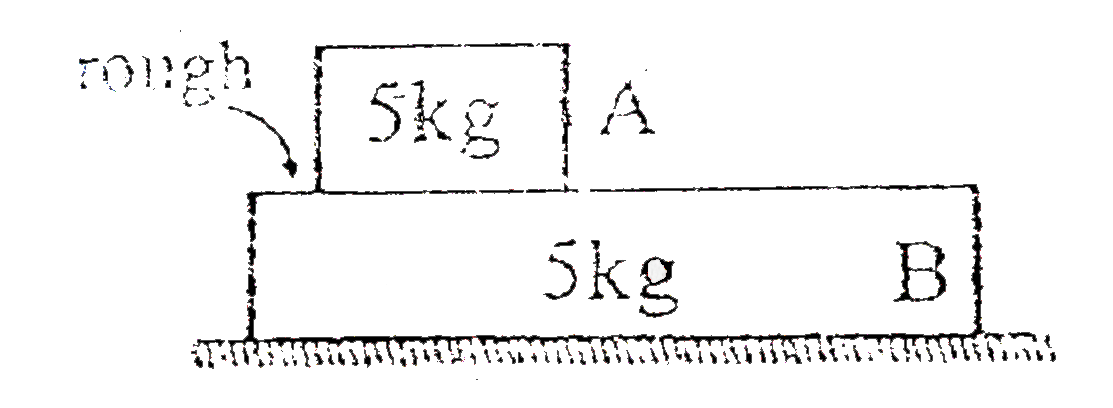
Which curve shows the correct variation of velocity of each block v/s time?View SolutionIn the figure shown the block B moves with , velocity 10ms−1. The velocity of A in the position shown is
 View Solution
View SolutionBlock A of mass 5kg is placed on long block B having a mass of 5kg. The coefficient of friction between two block is 0.4. There is no friction between the ground and lower block. The upper block is given a sudden velocity of 10m/s. The upper block slides toward right, so friction force acting on it will be toward left. Its reaction wall act on the lower block, which will act forward . The friction force absorbs x mechanical energy from upper block but supply only y mechanical energy to lower block. Due to friction the velocity of upper block reduces and velocity of lower block increases. This will continue till velocity of both the block get equal.
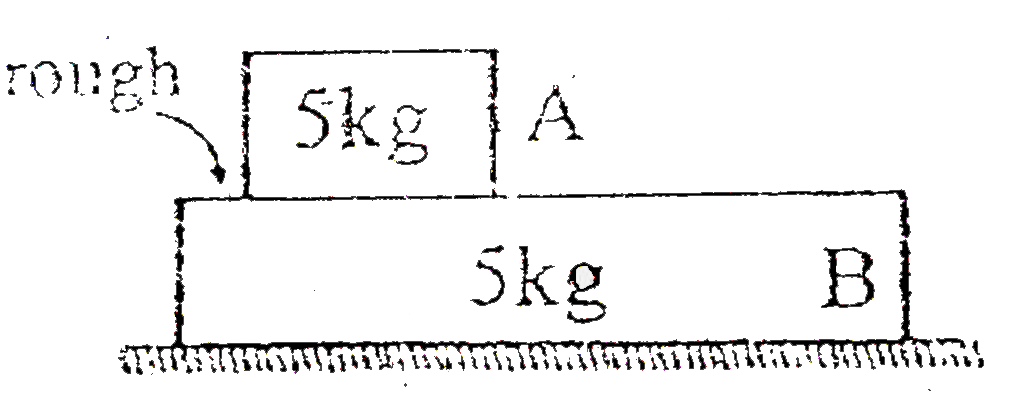
The net energy loss due to friction in the entire process isView SolutionIn the figure shown, block of mass 2 kg is very long. Force of friction on 1 kg block is
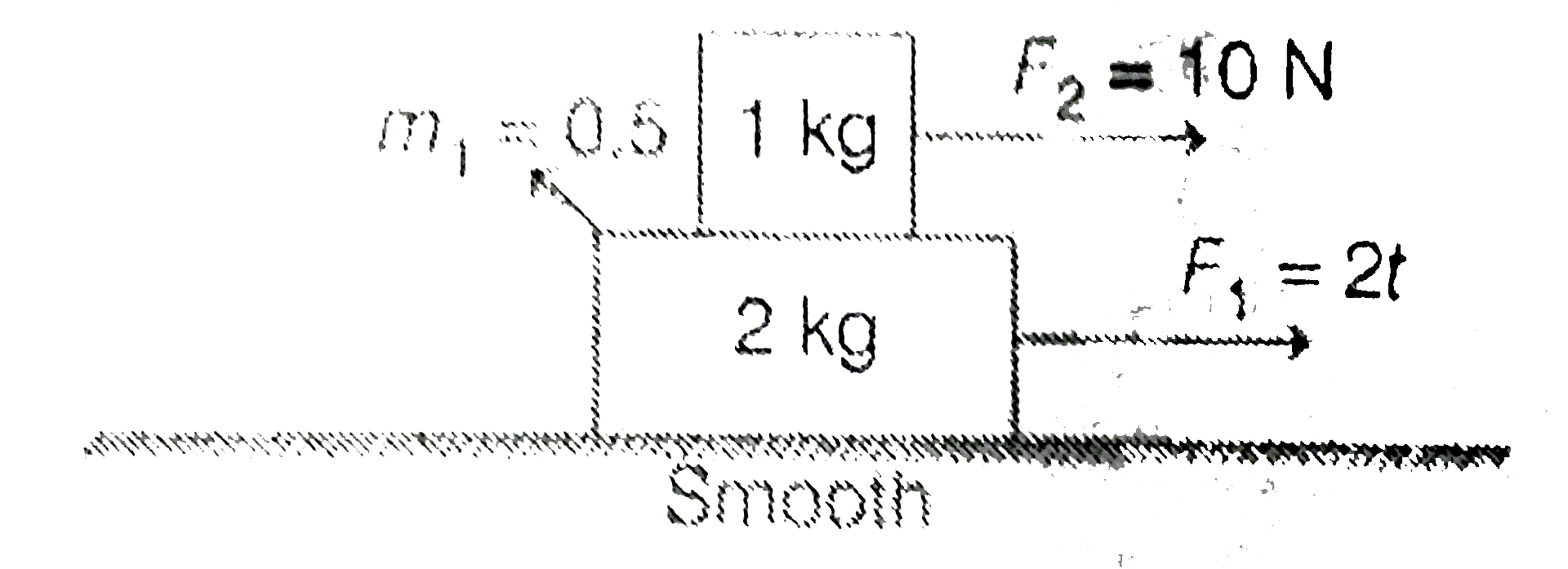 View Solution
View SolutionFind the force of friction acting between both the blocks shown in the figure.
View Solution

